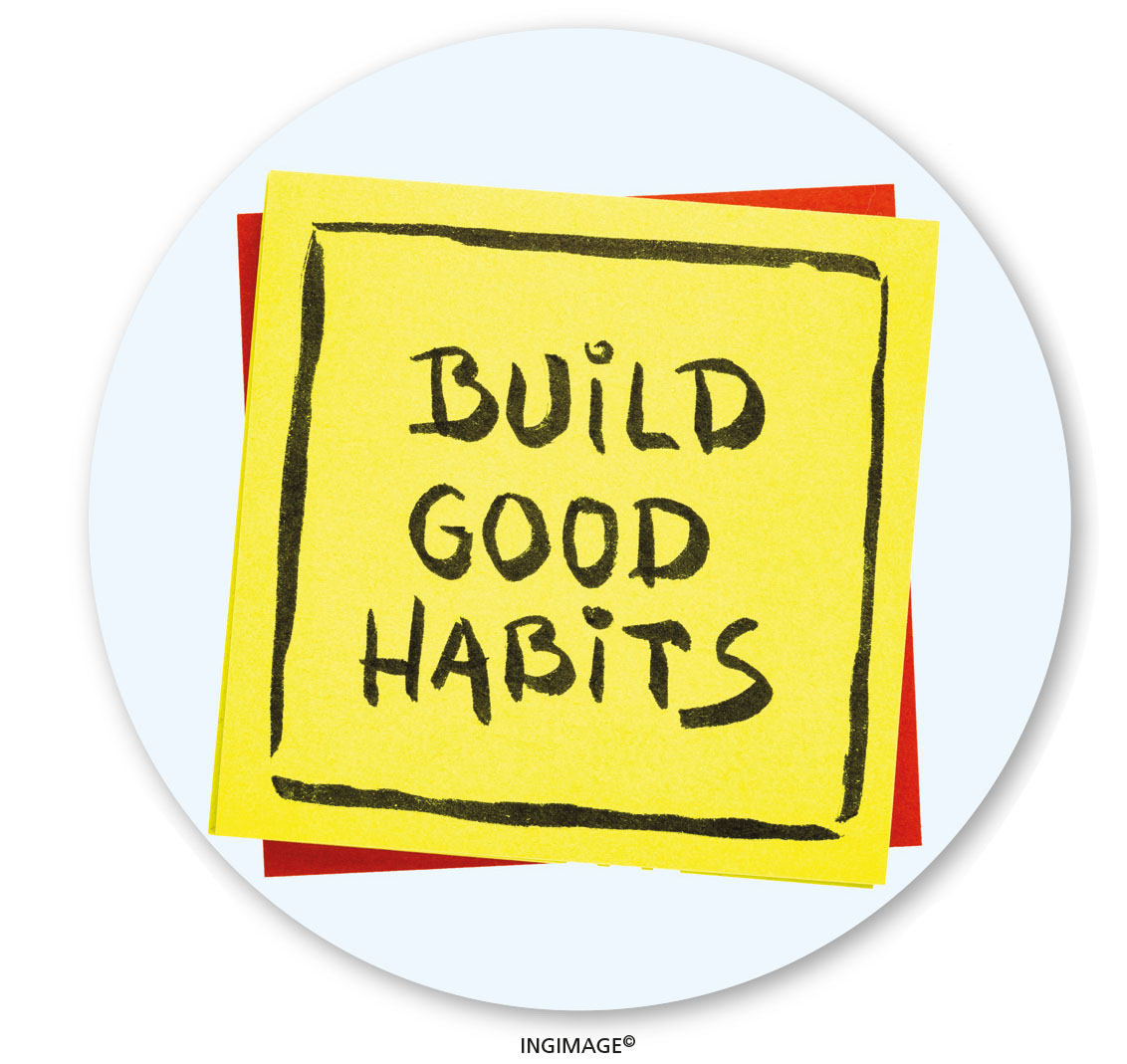BEHAVIOURAL CHANGE
BREAKING HABITS
Making sense of the inside-out approach BY Archana Law
Everyone has many habits and there’s nothing inherently wrong with that reality. Some of these habits are often useful – such as laying out your clothes for work the next day the night before or automatically turning off the lights whenever you leave a room.
 However, other habits such as nail biting, overdosing on caffeine, snoozing too many times or procrastinating aren’t beneficial!
However, other habits such as nail biting, overdosing on caffeine, snoozing too many times or procrastinating aren’t beneficial!
Getting rid of unwanted habits can be difficult especially if you’ve been engaging in them for a long time. But understanding how habits form in the first place can ease the process.
Habits can often be a good thing. For example, when you drive to work, you don’t need to wonder whether you should turn left or right because the route has become a habit. “We want the brain to learn how to do those things without energy and effort. Habits are an adaptive feature of how the brain works,” says Professor of Psychology at Stanford University Russell Poldrack.
But habits can sometimes lead us astray, such as turning to comfort food when we’re sad or taking a cigarette break when stressed. Many of these rewarding stimuli such as sugar or substances are powerful and we’re more likely to do what we don’t want to do when under stress!
Wouldn’t you agree that it’s unproductive to engage in repetitious actions expecting a new and better result?
In order to eliminate any unwanted habits, let’s start by understanding them better. There are a few theories on how habits develop – and the habit loop is one of the critical triggers.
REMINDER This is a trigger or cue that could be a conscious act, internal thought, feeling, image or external world that leads to the formation of a habit.
Examples include seeing cheese in the mind’s eye, craving nicotine or a thought about needing to exercise.
ROUTINE This is the behaviour that’s associated with the trigger. Doing something over and over can make the behaviour routine.
For example, thinking about cheese so much that you can taste it (and therefore, eat it) or becoming anxious, and lighting a cigarette and smoking it… then thinking and telling yourself that you’ll exercise tomorrow because you have no time right now.
REWARD The reward associated with a form of behaviour also helps make a habit stick. If you do something that causes enjoyment or relieves distress, the pleasurable release of dopamine in your brain can make you want to do it again. There is a positive intent motivating every action.
For instance, because you ate cheese, you feel good; and because you smoked a cigarette, the anxiety disappeared; and by not going to the gym, you have extra time on your hands to do something else that you’d rather do. It feels good.
Keeping these three aspects in mind, here are some tips to help you break stubborn old habits.
CHECK TRIGGERS To identify the triggers behind your habitual behaviour, note things such as where and when the habitual behaviour occurs; how you feel when it happens; and whether it takes place soon after something else as well as who else is involved.
SPOT BENEFITS Research suggests it may be easier to change your behaviour when the change you want to make is valuable or beneficial to you. Take a few minutes to consider why you want to break the habit and any benefits you see resulting from the change.
FRIEND SUPPORT Enlist a friend’s support, particularly through setbacks. If a friend or partner also wants to break an unwanted habit, try doing it together. Make it a point to cheer each other’s successes – and encourage each other through setbacks.
BE SELF-AWARE Practise mindfulness to develop awareness around your thoughts, feelings, and actions. This practice involves simply observing impulses that relate to your habit without judging or reacting to them. As you become more self-aware, you may find it easier to consider other options such as avoiding reminder cues or not acting on urges.
MENTAL PRACTICE Along with your physical efforts, indulge in the mental practice of starting a new habit or novel behaviour so that you’re better prepared to adopt it in the real world.
Neuroscience research has shown that when we imagine ourselves repeating an action, it activates the same regions in our brain as when we’re physically involved in it. Repetition helps habits become ingrained in the brain and muscle memory, and it then becomes second nature to us.
REWARD SUCCESS You may have an easier time breaking a habit if you replace the unwanted behaviour with a new one – i.e. instead of only trying to stop the old habit. Rather than reaching for cookies when you’re hungry, try dried fruit and nuts as another snack option.



